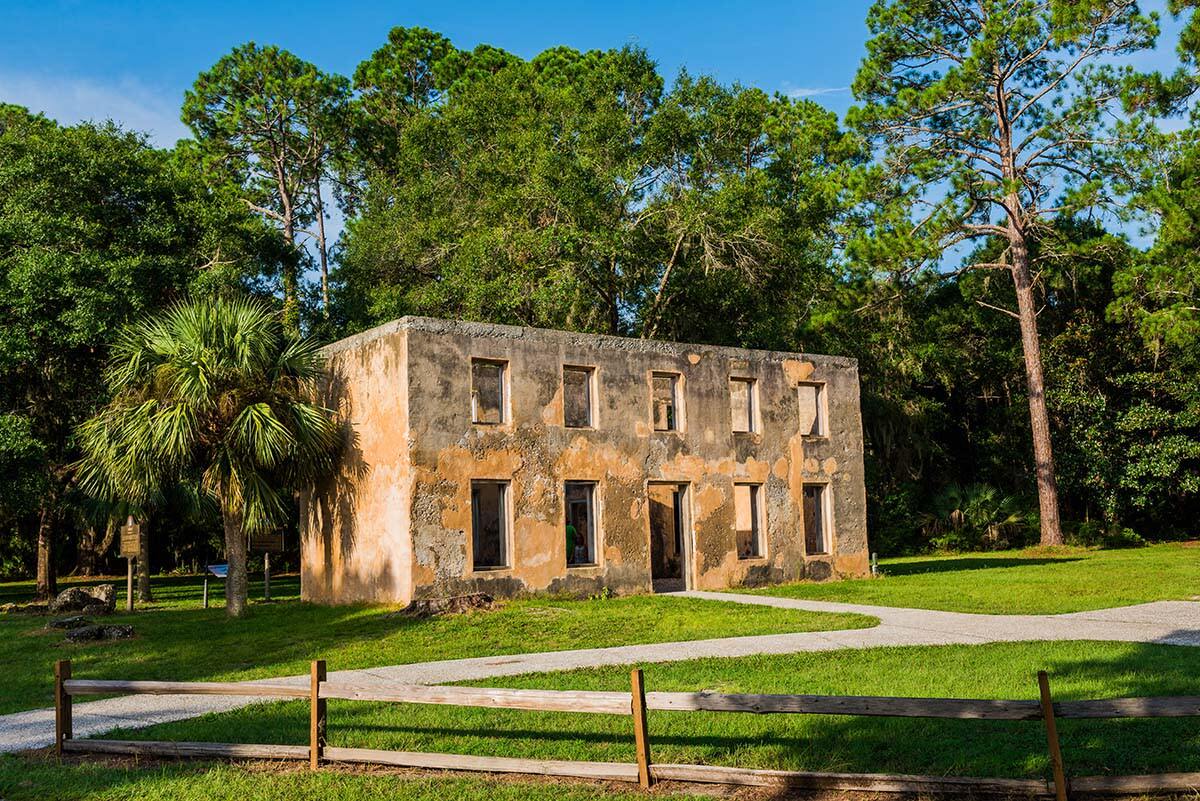Secrets Of Georgia’s Golden Isles Ruins

Have you ever wondered about the hidden gems of Georgia's coast? The Golden Isles offer more than just beautiful beaches and luxury resorts. These islands are home to fascinating ruins that tell stories of the past. From old plantations to ancient forts, each site has its own unique history waiting to be explored. Imagine walking through the remnants of a once-thriving plantation or standing in the shadow of a centuries-old fort. Whether you're a history buff or just love a good adventure, the ruins of the Golden Isles provide a perfect backdrop for your next trip. Ready to dive into the past?
Secrets of Georgia's Golden Isles Ruins
Georgia's Golden Isles are a treasure chest of history, with ruins that tell tales of the past. These islands, located off the coast of Georgia, are home to some of the most fascinating historical sites in the southeastern United States. Let's uncover the secrets hidden within these ancient ruins.
1. Fort Frederica National Monument
Fort Frederica, located on St. Simons Island, was established in 1736 by James Oglethorpe. This fort played a crucial role in the defense against Spanish forces. Today, visitors can explore the remnants of this colonial fort and imagine life during the 18th century.
- Historical Significance: Built to protect the southern boundary of the British colony of Georgia.
- What to See: Ruins of the barracks, the fort's walls, and the town's foundations.
- Activities: Guided tours, historical reenactments, and walking trails.
2. Horton House Ruins
On Jekyll Island, the Horton House Ruins stand as a testament to early colonial life. Constructed in 1743 by Major William Horton, this tabby house is one of the oldest surviving buildings in Georgia.
- Historical Significance: Major Horton was a key figure in the early settlement of Georgia.
- What to See: The tabby ruins of the house and the nearby duBignon cemetery.
- Activities: Self-guided tours and interpretive signs explaining the site's history.
3. Christ Church, Frederica
Christ Church, located near Fort Frederica, is one of the oldest churches in Georgia. The current structure, built in 1884, stands on the site of the original church established in 1736.
- Historical Significance: The church has served the community for centuries and is the burial site of many early settlers.
- What to See: The beautiful church building, historic cemetery, and ancient live oaks.
- Activities: Attend a service, explore the grounds, and visit the cemetery.
4. Cannon's Point Preserve
Cannon's Point Preserve on St. Simons Island offers a glimpse into the island's prehistoric and colonial past. The preserve includes the ruins of an 18th-century plantation and ancient shell rings from Native American inhabitants.
- Historical Significance: The site showcases both Native American and colonial history.
- What to See: Plantation ruins, shell rings, and diverse wildlife.
- Activities: Hiking, bird watching, and guided tours.
5. Jekyll Island Club
The Jekyll Island Club, established in 1886, was once an exclusive retreat for America's wealthiest families. Though not a ruin in the traditional sense, the historic district includes several buildings that have been preserved or restored.
- Historical Significance: The club was a playground for the elite, including Rockefellers and Vanderbilts.
- What to See: The grand clubhouse, cottages, and the historic district.
- Activities: Guided tours, dining at the club, and exploring the island's history.
6. Ashantilly Center
Located in Darien, the Ashantilly Center, also known as "Old Tabby," was built in the early 19th century by Thomas Spalding. The ruins of this plantation house offer a glimpse into the life of one of Georgia's prominent planters.
- Historical Significance: Thomas Spalding was a significant figure in Georgia's agricultural history.
- What to See: The tabby ruins, gardens, and historical exhibits.
- Activities: Educational programs, tours, and special events.
7. Hofwyl-Broadfield Plantation
Hofwyl-Broadfield Plantation, situated between Brunswick and Darien, was once a thriving rice plantation. The plantation house, built in the early 19th century, now serves as a museum showcasing the history of rice cultivation in Georgia.
- Historical Significance: The plantation played a vital role in Georgia's rice industry.
- What to See: The plantation house, outbuildings, and rice fields.
- Activities: Guided tours, museum exhibits, and walking trails.
8. St. Simons Island Lighthouse
The St. Simons Island Lighthouse, originally built in 1810 and rebuilt in 1872, is a beacon of maritime history. While not a ruin, the lighthouse and its keeper's dwelling offer a window into the island's past.
- Historical Significance: The lighthouse has guided ships safely to shore for over a century.
- What to See: The lighthouse tower, keeper's dwelling, and museum.
- Activities: Climb the lighthouse, visit the museum, and enjoy the views.
Discover the Magic of Georgia's Golden Isles Ruins
Georgia's Golden Isles offer a unique blend of history, nature, and mystery. Exploring the ruins scattered across these islands provides a glimpse into the past, from the tabby ruins of old plantations to the remnants of forts and churches. Each site tells a story, inviting visitors to step back in time and imagine life centuries ago.
Whether you're a history buff, nature lover, or simply seeking a new adventure, the Golden Isles have something for everyone. Wander through the ruins on Jekyll Island, St. Simons Island, and Cumberland Island to uncover the secrets they hold. Don't forget to bring a camera to capture the stunning landscapes and historic sites.
Plan your trip to Georgia's Golden Isles and experience the magic of these ancient ruins. You'll leave with memories and stories to share for years to come.

